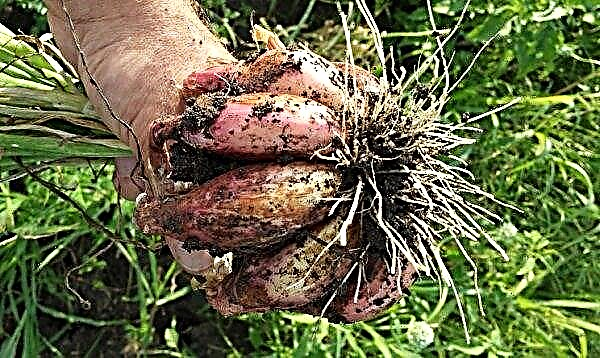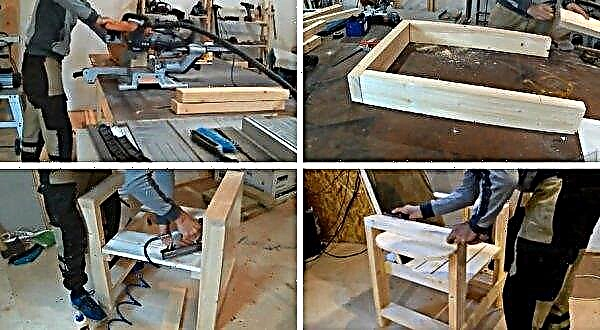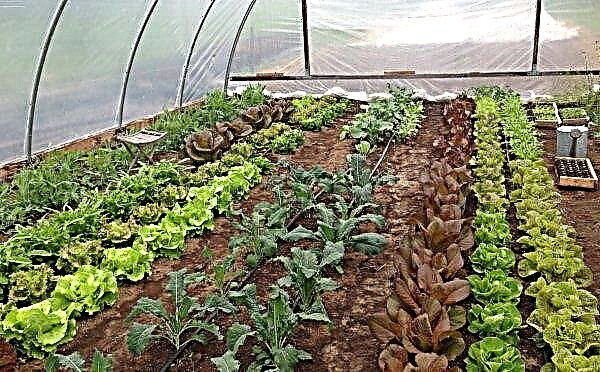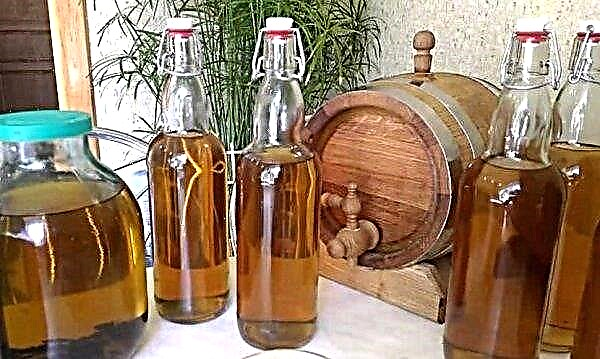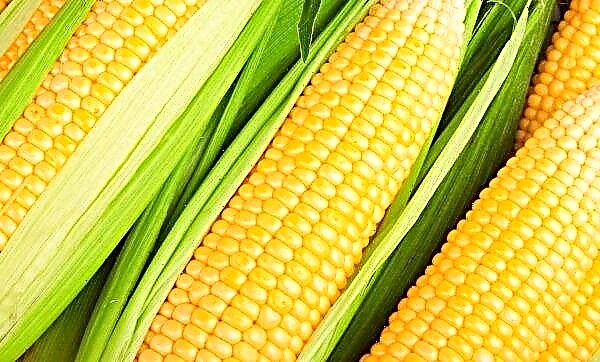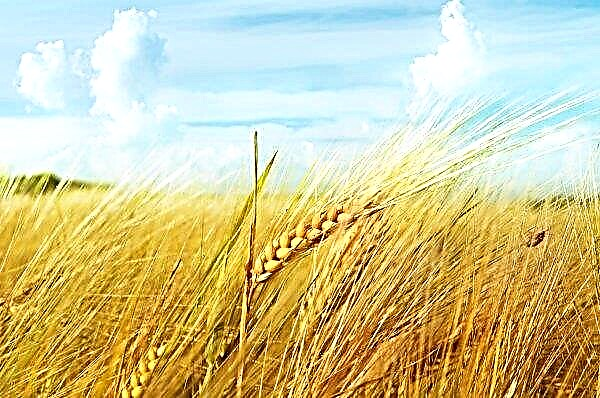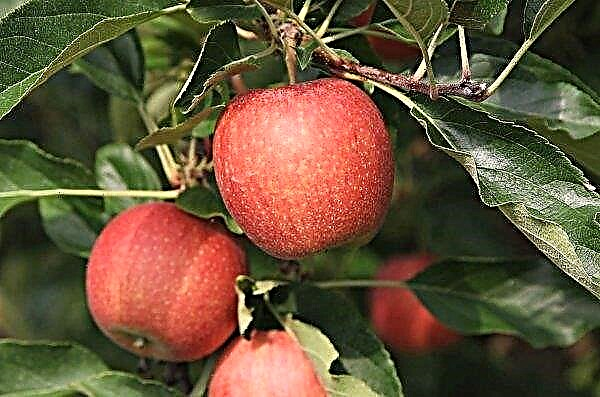To decorate various landscape zones and areas with plants, different techniques are used. One of them is the landing of tapeworms. What it is and how it is applied in practice - read further in the article.
What is a tapeworm
A single culture in the form of a bush, tree or herbaceous plant, separately located in the open space - this is the tapeworm. In Latin, this term means “lonely”. Such a copy should have exclusive and eye-catching features, since it is precisely on it that all attention is focused.
Did you know? Axel Erlandson is the founder of arbosculpture. This is the art of giving trees an unusual shape and shape. Axel created an entire park of sculptural trees in California called the Circus of Trees. The cultivation of one such instance takes up to 10-15 years.
It does not require accompaniment in the form of other plants. It can have an unusual foliage or crown shape, have spectacular colors or bright fruits. It is good if this plant is highly decorative at any time of the year, and looks spectacular from any angle.
Application of a tapeworm in landscape design
In the layout of garden and park areas, various techniques are used to decorate and stylize the space. Very often in landscape design use tapeworms. Their task is to fill in the empty zones, make the open area unusual and attract the main attention. And it does not matter whether it is a park area or a private plot. Using this technique implies not only the selection of a suitable plant, but also the provision of the desired viewing angle for it.
Important! Requirements for tapeworms can be different depending on the stylistic direction of the design. At the same time, the landscape features of the site, the objects located on it, soil features and other nuances are taken into account.
With the help of large plants, you can mask various landscape imperfections, old or plain buildings. Various columns, boulders, artificial reservoirs or arches, which can shade the brightness and unusualness of plants, will help enhance the visual effect of tapeworms. As a single element, you can use trees, shrubs or herbaceous plants that are located in the open area or against the background of the array. Even a grass of an unusual shade can act as a tapeworm.
The following options can also be used:
- in a park landscapewhere there is enough space, large trees are planted. For example, oaks, pines or birches;
- exceptionally solo use in the Japanese style such flora representatives as Japanese maple, quince and sakura;
- bonsai plants fit not only into the Japanese or Chinese landscape, but also decorate any free space;
- in english style large herbaceous specimens often act as tapeworms: river gravel, stockroza, Rogersia, marsh iris, etc. A hedge or small pond can become a background for them;
- Art Nouveau use broadleaf hosts, spiky irises or tall ornamental grasses that are placed near wrought iron fences or garden furniture;
- beautiful bush of cerealsplanted in free space will look unusual and detached;
- planting fruit trees - A suitable choice for personal plots. Skillfully cut apricot trees, apple trees or cherries will not only look beautiful, but also provide a harvest;
- on a green lawn in the recreation area, most often planted are lilac, barberry or viburnum Buldenezh;
- from perennial flowers as solo specimens, mainly roses, irises, decorative sunflowers, etc. are used;
- sometimes in single plantings the use of two adjacent plants is practiced (trunk to trunk). This is being done to provide a more spectacular shape;
- "duet" can be created not only from the same cultures, but also from different plants (for example, a tree and a bush). This option is also considered solitary landing.
Which plants to choose
From a wide variety of flora representatives, it can be quite difficult to choose the right option. Many gardeners turn to designers, but some prefer to experiment on their own. To simplify the task - an overview of the most suitable plants for solo planting.
Deciduous trees
Having opted for a deciduous plant, it should be borne in mind that in winter the foliage will fall, so you need to select species with an unusual crown shape, curved branches or colored bark.
Suitable options may include:
Many more unusual and beautiful trees can be included in this list, since their diversity is great - for every taste and need.
Conifers
Ideal for the transformation of even the most seedy and unsightly area are representatives of conifers. Their huge advantage is decorative, which does not depend on the season. For this reason, they are very popular.
Among the evergreens, the following solo specimens can be distinguished:
- Ate considered the most traditional option. In addition to needles of various shades, these plants attract attention with their buds of different sizes and colors. The blue spruce has both tall and stunted representatives. Prickly spruce, similar to a fluffy ball of bluish-green color, as if created for small areas. The drooping crown of pygmy spruce ordinary looks original from any angle.

- All pine trees They are used in landscaping, but compact mountain pine species that look perfect on alpine hills are especially in demand.
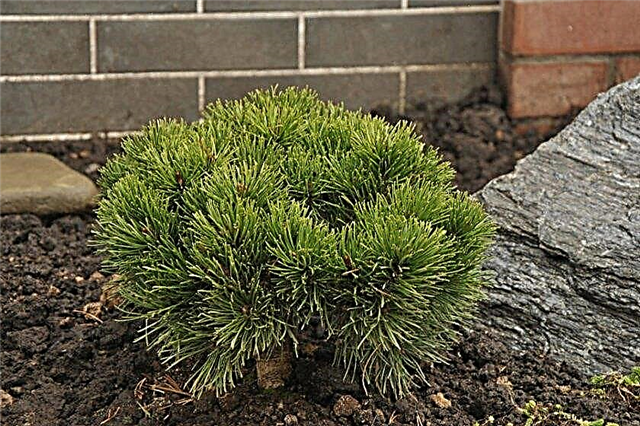
- Leading positions in solo compositions thuja. They differ in height, crown shape and color of needles. In solitary landings over large territories, pyramidal and conical specimens are used. The spherical forms of plants are soloed on the lawns.
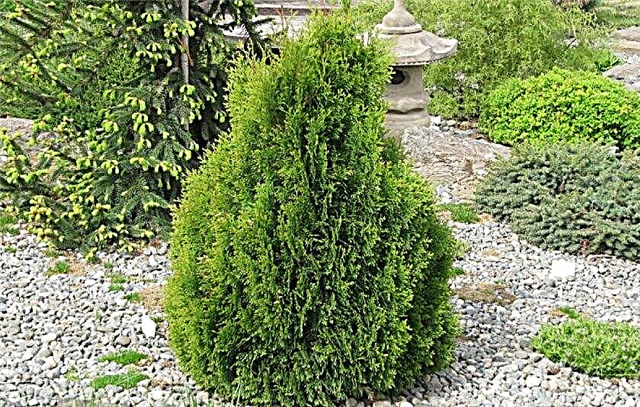
- Junipers (both bushes and trees) are widely used in landscape design. Their scaly or needle-shaped needles of various shades are an ideal decoration at any time of the year. For solo compositions, large vertical varieties are most often in demand.

- Fir also very popular as tapeworms. The trees have a conical shape and a grayish, smooth or cracked bark. Varieties differ in the type of needles and the color of the cones.
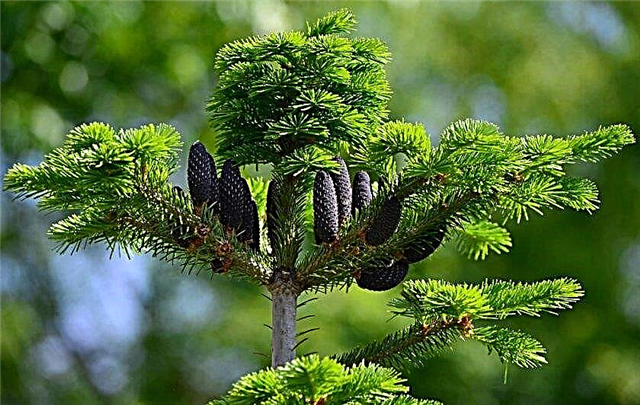
- Cypress, unlike firs and pines, has very soft and fluffy scaly needles. Its value lies in a huge variety of forms of crown and color of needles. Dwarf varieties are especially popular.

- Larch trees because of their size, they are not often found in private areas, but are popular in park areas. However, the property of a tree to tolerate pruning well makes it possible to form a crown and include it in any solo composition.

In addition to these plants, there is yew, boxwood, cedar, tsuga and other representatives of the flora.
Flowering shrubs
Shrubs are often used as tapeworms. Separately, I want to note the beautifully flowering specimens, which are very popular among gardeners because of the incredible beauty and amazing aroma during flowering.
Did you know? In Brazil, an unusual jaboticaba tree grows, covered with grape-shaped fruits. The unusual thing is that the fruits are placed not only on the branches, but also on the trunk (this phenomenon is called caulifloria). Exotic add and white hairy flowers.
Of the vast number of these representatives, mention should be made of:
- lilac found in almost every household plot. Bushes bloom profusely, from the first of May to mid-June. Large paniculate inflorescences are represented by various shades: white, lilac, blue, violet, purple, etc. Flowers have an incredible aroma;

- hydrangea blooms in August - September. Large corymbose inflorescences differ not only in color (white, pink, greenish, etc.), but also in shape (spherical, pyramidal, hemispherical, etc.). To give greater decorativeness, the bushes are pruned;
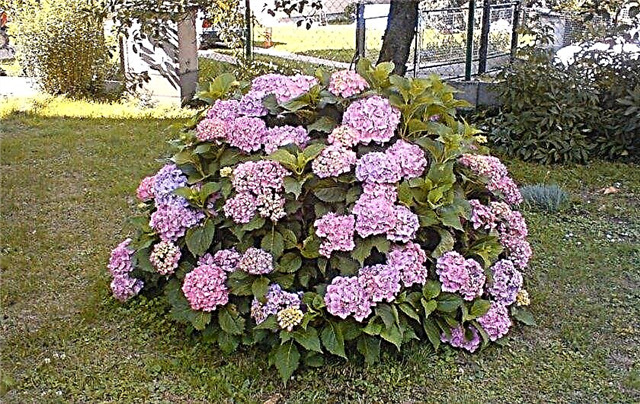
- rhododendron abundantly covered with flowers in mid-April. Due to terry inflorescences, mainly pinkish-lilac shades, almost no leaves are visible on the shrub. Varieties with orange, yellow or red flowers are rare;

- Forsythia even before the leaves bloom, it is covered with bright yellow flowers with oblong petals. Flowering lasts from 2 to 4 weeks and gives incredible decorativeness to the bushes. Green leaves appear in early May, acquiring a reddish tint by autumn;

- weigela - a shrub of two meters in height, which in May is covered with yellow or pink flowers in the form of bells. Flowering lasts until mid-summer. Weigels have not only flowering varieties, but also decorative foliage;

- spiraea divided into 2 types: spring flowering and summer flowering. In the first representative, snow-white flowers appear in May, and in the second, pink buds open in July;
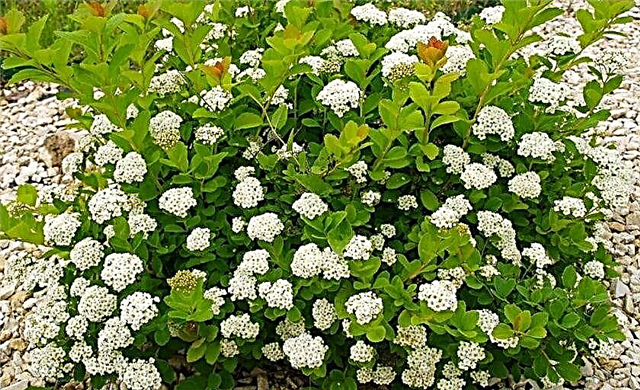
- buddley has drooping stems covered with small green leaves. Panicled or spherical inflorescences bloom in May. Flowering lasts until August. Petals can be snow-white, pink, yellow or orange;
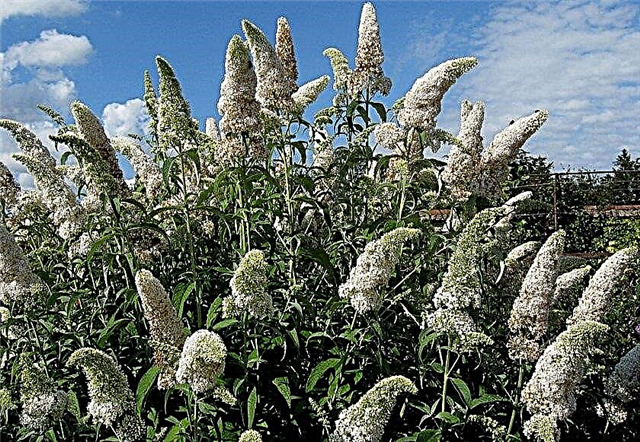
- magnolia has unusually beautiful flowers blooming in late April or early May. Large flowers are painted in white, lilac, ruby or yellow. Light green leaves with the onset of cold weather acquire a copper hue.
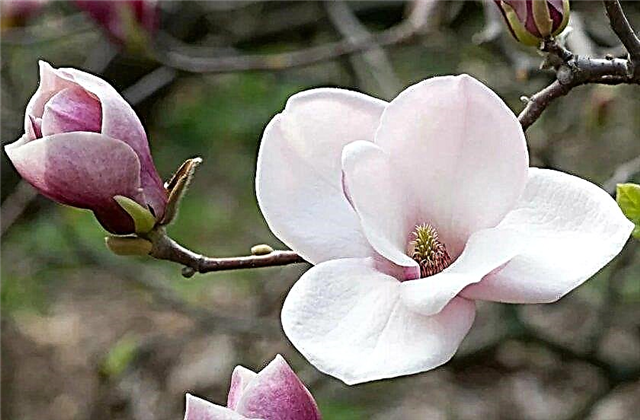
Rarely, but still there are such exotic plants as tapeworms:
Herbaceous plants
Perennials and cereals are great for solo plantings.
This role will do just fine:
- rose bushes;
- peonies;
- irises;
- lilies and daylilies;
- delphinium;
- hosts
- Rogers
- decorative cereals, etc.
 Among herbaceous plants, many species can be selected as tapeworms. What culture the choice will fall on will depend on the desired result.
Among herbaceous plants, many species can be selected as tapeworms. What culture the choice will fall on will depend on the desired result.Site Selection and Landing Rules
Deciding on a plant to be used as a tapeworm is not enough. In order for culture to appear in all its glory, it is necessary to choose the right place. Only in this case the composition will look spectacular and will not be lost in the landscape.
Important! When creating solo compositions, it should be borne in mind that herbaceous plants will please the result immediately, and bushes and trees - only after a few years. Therefore, so that the territory is not empty, planting must be supplemented with various details (small discounts, garden furniture or annual herbs).
When choosing a place, you should consider some nuances:
- spacious and open area (for example, a green lawn) will serve as an excellent location for a tapeworm;
- solo plant can be placed near the gazebo, in front of the building, near a pond or in a recreation area;
- proportions required. The ratio of the size of the culture and the plot should be approximately 1: 3;
- tapeworm not recommended for planting next to flower beds or rockeriesso that the plant does not lose its personality. Discreet shrubs or hedges are chosen as the background;
- tall trees are not desirable near residential buildingssince over time they give a lot of shadow;
- plants with dark colored foliage or flowers should land closer to the place of observation: near arbors, benches or paths, and tapeworms with bright colors, large leaves and flowers need some removal;
- instances with large, catchy flowers and foliage will be look spectacular on a plain background wall or fence in the background;
- hygrophilous plants should be planted near ponds, photophilous - in sunny areas, and hardy - in shading. That is, when choosing a place, the conditions necessary for normal plant growth should be taken into account.
 When doing a solo landing, you also need to adhere to certain rules:
When doing a solo landing, you also need to adhere to certain rules:
- the culture must have a bright, elegant or bizarre appearance in order to attract attention and hold your eyes;
- there should be enough free space around the plant for it to stand out;
- competition must not be allowed. A beautiful bush or flower planted nearby will distract attention and negate the original idea;
- from a distance, the general form should be visible, and when approaching, details;
- when choosing deciduous culture as a tapeworm, you need to consider its appearance in the winter, when foliage will fall. Therefore, in addition to beautiful leaves, it should have some other original qualities (for example, multi-colored bark);
- in large areas large plants will harmoniously look, and in small areas it is difficult to maintain proportionality; therefore, low-growing trees and shrubs or herbaceous plants should be chosen as solitaires;
- it is not necessary to remove an old tree or bush from the site. With a competent approach, plants can be given a special decorative effect;
- plants that quickly lose their decorative effect after flowering are not suitable for solo composition Such representatives include bulbous;
- ugly buildings or unattractive places can be masked with tapeworms.
Creating solo compositions requires attention and imagination. But the result is worth it, as the result is a beautiful decor that does not require annual investments.
















